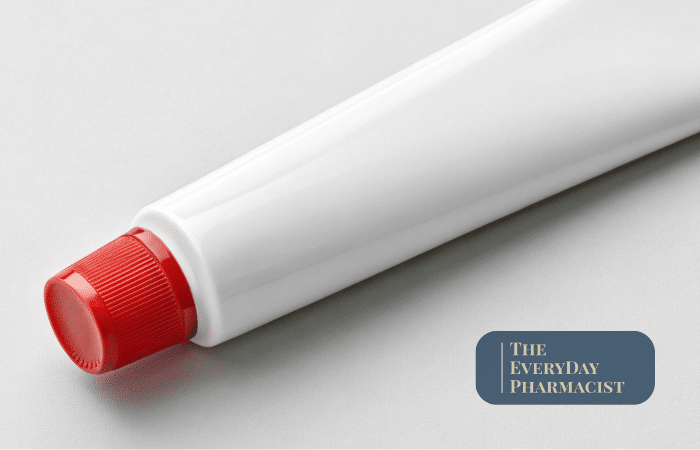
By Sarah Day Spangler, RPh – The EveryDay Pharmacist
When I first became a pharmacist, I imagined spending my days guiding people through their prescription medications, helping them understand what they were taking and why. But in retail pharmacy, that vision quickly got buried under insurance hassles, ringing phones, and the nonstop rush of prescriptions. Seeing patients leave the pharmacy confused and frustrated made me realize there had to be a better way to provide a more personal level of care.
The real reward for me isn’t just sharing information with my patients, it’s watching someone realize they have a say in their own health. When they leave understanding the “why” behind their medications and how to support their body beyond their prescription, that’s when I know I’m doing what I was meant to do.
That’s why I created The EveryDay Pharmacist. Now, I meet one-on-one with clients, break down the science into ‘real’ talk, and turn complicated treatment plans into something that actually makes sense for each individual person. Even a simple rash or skin irritation becomes a chance to teach, empower, and help someone feel confident about their next steps.
This article is one of the ways I share that guidance more widely. Whether it’s a stubborn rash or a chronic condition, understanding the basics can help you make smarter, more confident choices.
You spot a red, itchy patch… a stubborn rash… or a breakout that appears out of nowhere. Your first instinct? Book a dermatologist. Weeks later—plus a pricey prescription or two—you realize you might’ve managed it sooner or cheaper by trying something else first.
This guide walks you through smart, effective over-the-counter (OTC) options to try before paying for expensive prescriptions. You’ll learn what each type of cream does, when to use it, and how to get the most out of it—so you can walk into any appointment already a step ahead.
(Note: “cream” here can also mean lotions, ointments, gels, or hybrids.)
Please remember everything here is meant to educate and empower you to have better conversations with your own healthcare providers, not replace professional medical care.
Prescription creams absolutely have their place when skin conditions need stronger, targeted therapy. But a lot of everyday issues—like mild allergic reactions, athlete’s foot, contact rashes, and minor breakouts-respond surprisingly well to OTC cream ingredients.
Starting with an OTC can:
Before you reach for an OTC product, make sure it’s appropriate for what you’re treating. Some symptoms need medical evaluation first.
Seek professional care if you notice:
If symptoms worsen or become severe, see your doctor or urgent care promptly.
Quick rule of thumb: If it’s mild, not spreading, and not oozing, a well-chosen OTC could be a smart first step. That’s why I want to help you understand the differences between them.
Use this OTC cream quick comparison to choose an appropriate option:
| Category | What It Does | Try It For | Common Brands | Generic / Active Ingredients | How to Use |
| Low-Strength Steroids | Calms itching, redness, and inflammation | Mild eczema, allergic rashes, bug bites | Cortizone-10, Aveeno 1% Hydrocortisone | Hydrocortisone 1% | Thin layer 1–2×/day for up to 1–2 weeks. Stop if skin thins or stings. |
| Antifungals | Treats fungal infections on skin | Athlete’s foot, ringworm, jock itch | Lotrimin AF, Lamisil AT | Clotrimazole 1%, Terbinafine 1%, Miconazole 2% | 1–2×/day for 2–4 weeks. Keep area clean and dry; be consistent. |
| Antibiotics | Helps prevent infection in minor cuts/scrapes | Superficial breaks in skin, small wounds | Neosporin, Polysporin | Bacitracin, Polymyxin B ± Neomycin | Thin layer after gentle cleansing. If redness spreads or there’s pus, escalate care. |
| Anti-Itch / Soothers (Non-steroid) | Relieves itch without steroids | Mild irritation, hives, bug bites | Sarna, Benadryl cream, Gold Bond Soothing | Pramoxine, Diphenhydramine, Menthol/Camphor | Use as needed for comfort; patch test first on sensitive skin. |
| Barrier Repair & Moisturizers | Restores skin barrier; locks in moisture | Dry skin, eczema maintenance, sensitive skin | CeraVe, Eucerin, Aquaphor | Ceramide-rich creams; Petrolatum ointments | Liberally after bathing and before bed; daily use helps prevent flares. |
| Acne Treatments | Unclogs pores; reduces bacteria/inflammation | Whiteheads, blackheads, mild acne | Differin 0.1%, Neutrogena, Clean & Clear | Adapalene 0.1%, Benzoyl Peroxide 2.5–10%, Salicylic Acid 0.5–2% | Start low and go slow; results take 6–8 weeks. See dermatologist for cysts/scarring. |
A few pro tips that significantly change outcomes:
Know when to escalate. If you’re not seeing the expected improvement in the label’s timeframe or your symptoms spread or worsen, seek medical care, not a different OTC
Before you spend hundreds of $ on prescription creams or wait months for a dermatologist appointment, let’s make sure you’ve first tried the right OTC. There’s a lot to choose from and I hope this gives you some guidance on whether it’s time to call your healthcare provider or head to the local pharmacy shelves.
If you need more than help with OTC creams, The EveryDay Pharmacist offers personalized guidance on:
If you’re tired of guessing—or wasting money on products that don’t work—let’s change that.
Email sarah@hrwcservices.com to schedule a medication coaching session with a pharmacist and leave with a plan that makes sense for your skin, health, and budget.
Disclaimer: At Healing Roots Wellness Center, we’re committed to supporting your mental well-being with professional care and guidance. The information shared in this blog is for educational and informational purposes only and is not intended as a substitute for personalized mental health support or medical advice, diagnosis, or treatment. While we are qualified mental health professionals, we do not diagnose medical conditions. If you have specific concerns about your health or well-being, we encourage you to seek advice from the appropriate healthcare provider. Healing Roots Wellness Center does not endorse any specific tests, products, procedures, or opinions mentioned in the blog. Reliance on the information provided is solely at your own risk. Remember, your mental health journey is unique, and the right support can make all the difference.
At Healing Roots Wellness Center, we’re committed to supporting your mental well-being with professional care and guidance. The information provided throughout our website – including blog posts, articles, and other content – is for educational and informational purposes only. It is not intended as a substitute for personalized mental health support or professional medical advice, diagnosis, or treatment. While we are qualified mental health professionals, we do not diagnose medical conditions. If you have specific concerns about your health or well-being, we encourage you to seek advice from the appropriate healthcare provider. Healing Roots Wellness Center does not endorse any specific tests, products, procedures, or opinions mentioned on our website. Reliance on the information provided is solely at your own risk. Remember, your mental health journey is unique, and the right support can make all the difference.
Whether you’re ready to schedule a free consultation or just have a few questions before getting started, you’re in the right place.
Pilar offers a compassionate, safe space to explore the impact of trauma, relationship wounds, anxiety, overwhelm, and the everyday pressures of life. If you’re longing for more authentic connection — with others and with yourself — this form is your first step.

Whether you’re seeking support for anxiety, chronic illness, trauma, parenting stress, or something else entirely — this is a safe and simple first step.
This short form will help us get to know what kind of care you’re looking for and match you with the best clinician for your needs. You can choose someone specific from our team or let us help place you with a therapist who aligns with your goals and preferences.
You’ll also have the chance to select the areas you’d like support with — whether that’s just one specialty or several.

